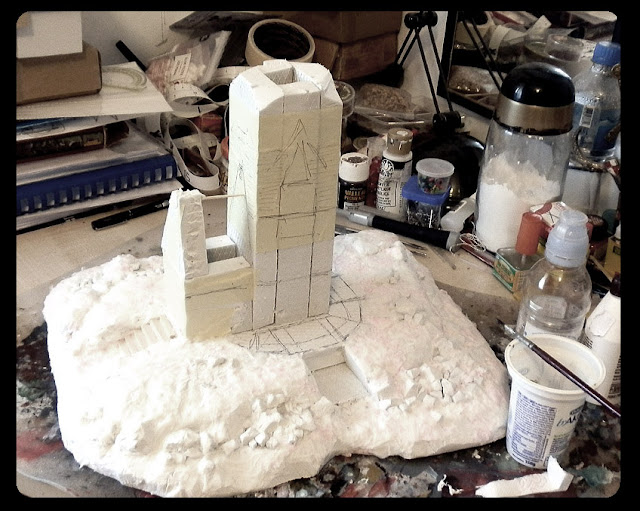According to legend, the Chapel of St. Hubertus in the Waywode Hunting Grounds is guarded by a group of supernatural beings. Among those creatures are a handful of Wodewoses, feral people from ancient times. These particular Woses were tamed by the Waywode ancestor who had the chapel built, and remain bound to it to protect it. They are said to inhabit the surrounding woods.
INSPIRATION and REFERENCE
Wildman, or woodwose/wodewose, is a figure that appears as an allegorical device in 13th-15th century European art and literature (and as decoration in architecture and as a heraldic device). It is depicted as a humanoid creature with a hirsute body that inhabits wild places - forests and mountains, where it dwells in caves. The wildman is naked, with hair covering the body except the face, feet and hands (sometimes also knees, elbows and/or breasts). The head hair is longer than body hair (like head hair and beards in humans). Usually carries a wooden club or mace.
 |
| Albrecht Dürer. 1499. |
The woodwose of Medieval literature used to be a human being but went feral when separated from God's grace. The degeneration might be due to insanity, being brought up by animals or some great trouble in life. This instantly reminded me of king Nebuchadnezzar, and the time that he lost his wits and lived in the wild like an animal for years. Just like the Babylonian king, a wildman is able to get better and return to civilized society. The fuzzy body and fuzzy mind are both a part of an acquired state which can be reversed.
 |
| Nebuchadnezzar. Artwork by William Blake. |
There are wildman figures in European rural folklore as well. Unlike the literary ones, they are not of human origin but a separate natural species or supernatural spirit. The folkloristic wildmen are described variously as ugly, unable to speak, supernaturally strong, having a savage temper, posessing knowledge of plants and mastery of animals. In many cases they are anthropofagous. The males have a habit of abducting human children and women, while wildwomen like to captivate human men (often using shape-changing to accomplish that).
 |
| Medieval depiction of a wildwoman. |
Hunting and capture of wildmen appear widely as a folk dramatic performance (and we can find that trope in Medieval iconography, too). The wildmen of art and literature most probably came from folklore and were then transformed. Other possible sources/influences are the Bible, writings from classical antiquity of mythical creatures and gods like Pan and satyrs, and contemporary descriptions of encounters with primates.
Source:
Forth, Gregory. "Images of the Wildman Inside and Outside Europe." Folklore, 2007, pp. 261-281.
THE CONVERSION
The base miniature is a plastic Plaguebearer. I filed down the gut and cut off its legs. The head came from an old Empire State Trooper. The shield is from the current State Troops set. The rest is green stuff.
* * *
An update on the corpse markers for the Troglodytes. I think I have enough now.
I finally have all I need for the chapel, so my next move will be starting work on it.



























